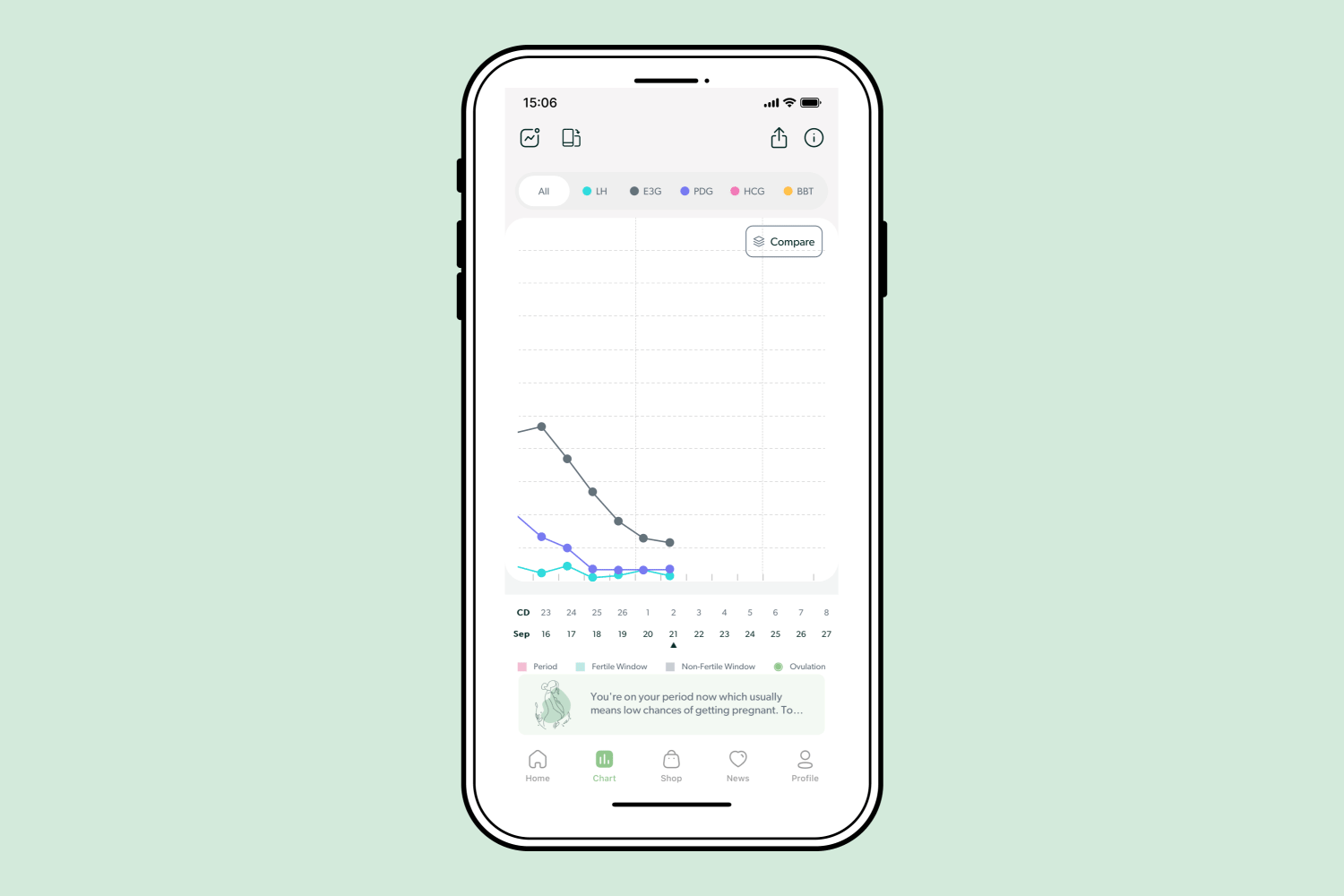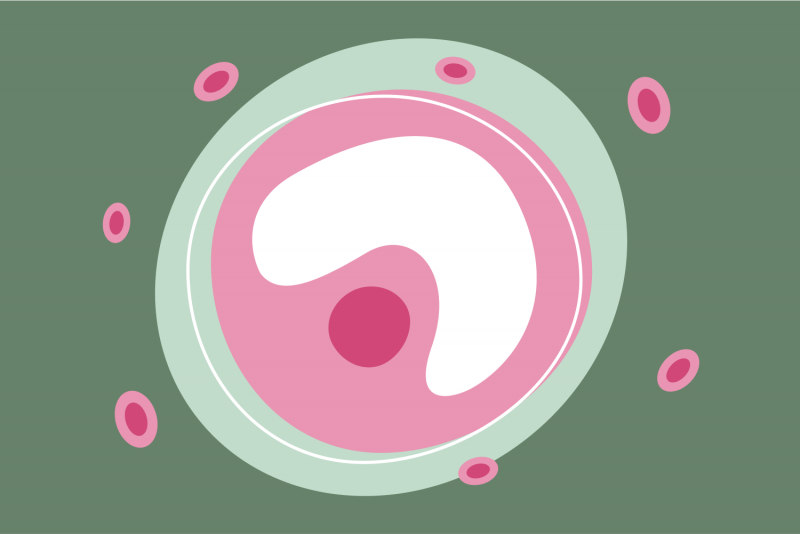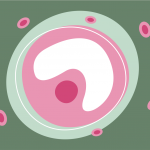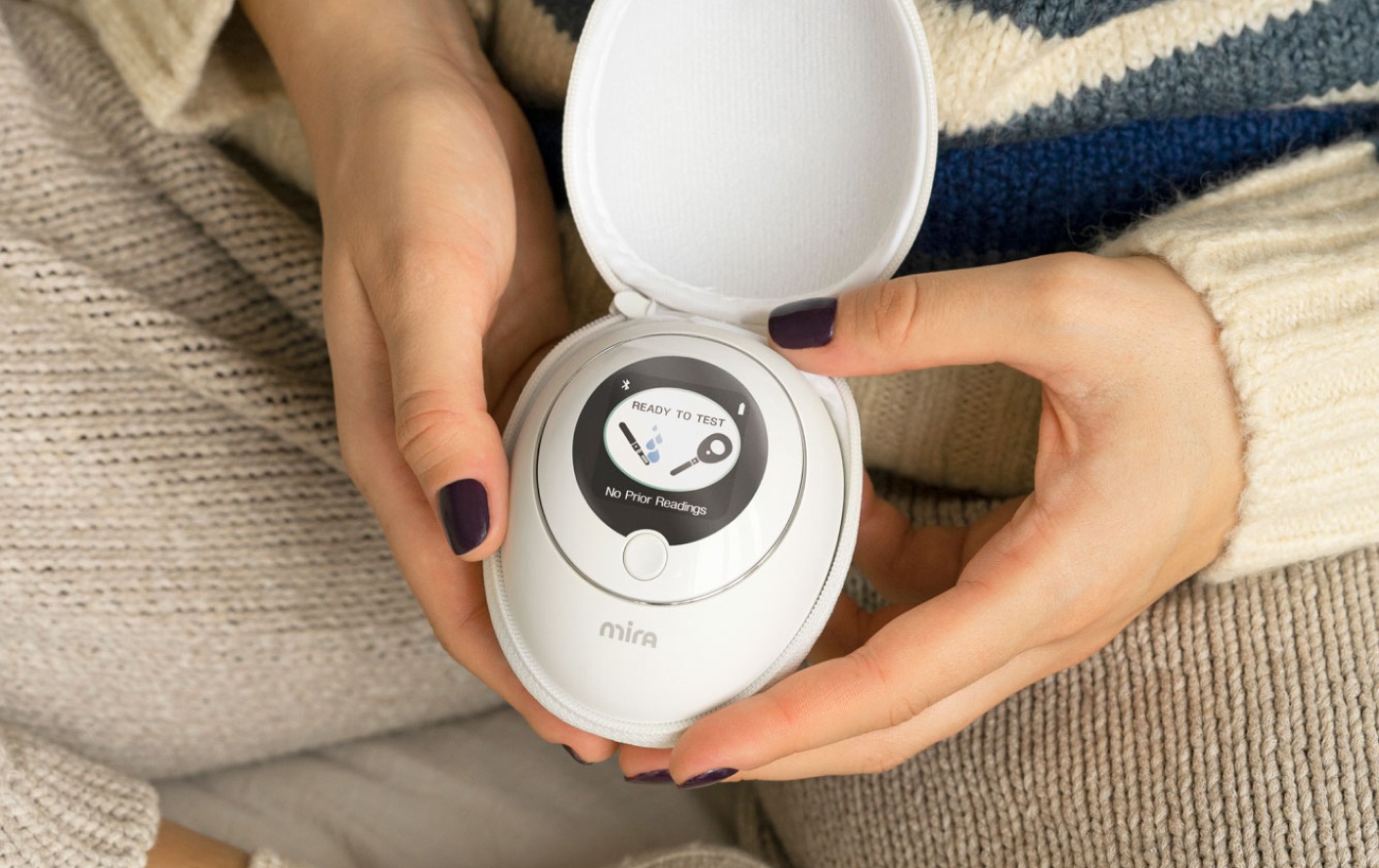The Mira App: How to read FSH results?
First things first: what is FSH?
FSH, known as the follicle-stimulating hormone, is a pituitary hormone that stimulates the recruitment, growth, and development of ovarian follicles.

FSH is commonly used in medical practice to assess ovarian function and confirm the transition to menopause.
What is a normal FSH range?
FSH levels vary depending on the person!
Generally speaking, your FSH levels will be at <10 mIU/mL during your non-fertile phase. However, this number will increase during the beginning of your LH surge and increase progressively to its peak on your ovulation day. On this day, FSH levels will increase to 30mIU/ml or higher.
The range of detection for Mira Wands is 1-200 mIU/ml.
Average Ranges for FSH hormone are:
| Follicular phase | Ovulatory phase | Luteal phase |
| 3-10 mIU/mL | 10-30+ mIU/mL | 2-5 mIU/mL |
What does a high level of FSH mean?
Continuously high levels of FSH (>30 mIU/mL) indicate that an individual is approaching menopause. If FSH consistently measures above 10 mIU/mL on day three of a cycle, it may be a sign of diminished ovarian function.
When should I test for FSH?
For regular cycles, we recommend testing with Mira Ovum Wands on cycle day 3 and repeating the test for 3-5 days for at least 2 cycles.
For irregular cycles, we recommend testing on any day of the cycle for 5-7 days at the same time for at least 2 months.

In doubt about your FSH values on the Mira app? Remember that you can always share your results with one of our certified Fertility Coaches. They will help you understand your Mira charts.
Disclaimer: Fertility coaches do not provide diagnoses, treatment, or medication prescriptions. Our services are designed to offer education, promote well-being, and extend emotional support. Fertility coaches do not have access to your Mira results. You will be required to upload your Mira results prior to your appointment.

A little extra support from an expert can go a long way
Book an online consultation with one of our Hormone Health Coaches.
Schedule NowHow many FSH surges occur during the menstrual cycle?
There are typically 3 FSH surges within the menstrual cycle. The first one is at the beginning of the cycle (typically on day 3 of the cycle) to stimulate follicles to grow, the second one occurs around ovulation along with LH peak to trigger ovulation, and the third one occurs 2-3 days before the menstrual period to recruit follicles for the next cycle.
Can a surge in FSH help to predict ovulation?
Yes. According to one study, the second FSH peak occurs on average 2 hours before ovulation.
Now you can read:
Mira’s Editorial Process
All content produced by Mira meets stringent editorial standards, ensuring excellence and accuracy in language and medical precision. Every piece undergoes thorough fact-checking and review by qualified professionals. Check out our full editorial process to learn more.










